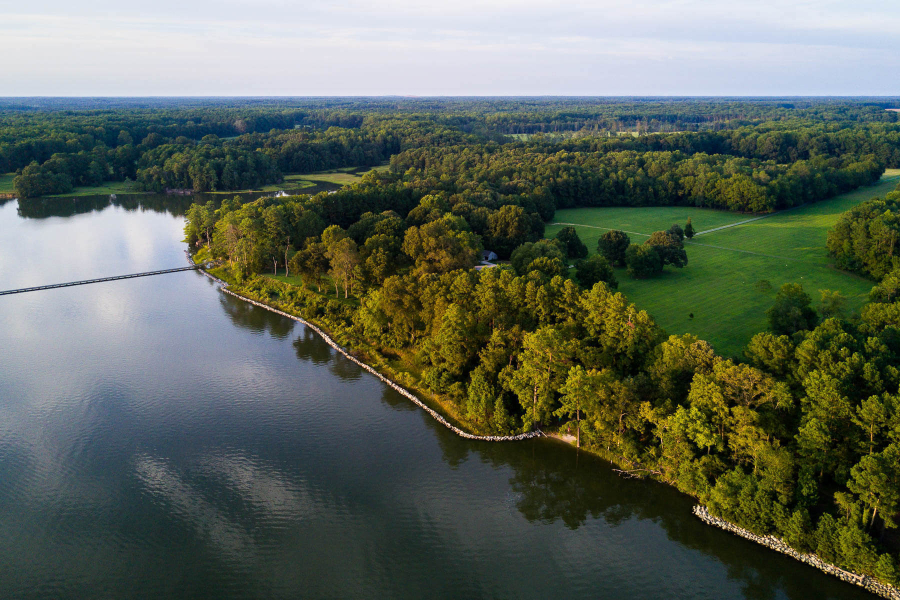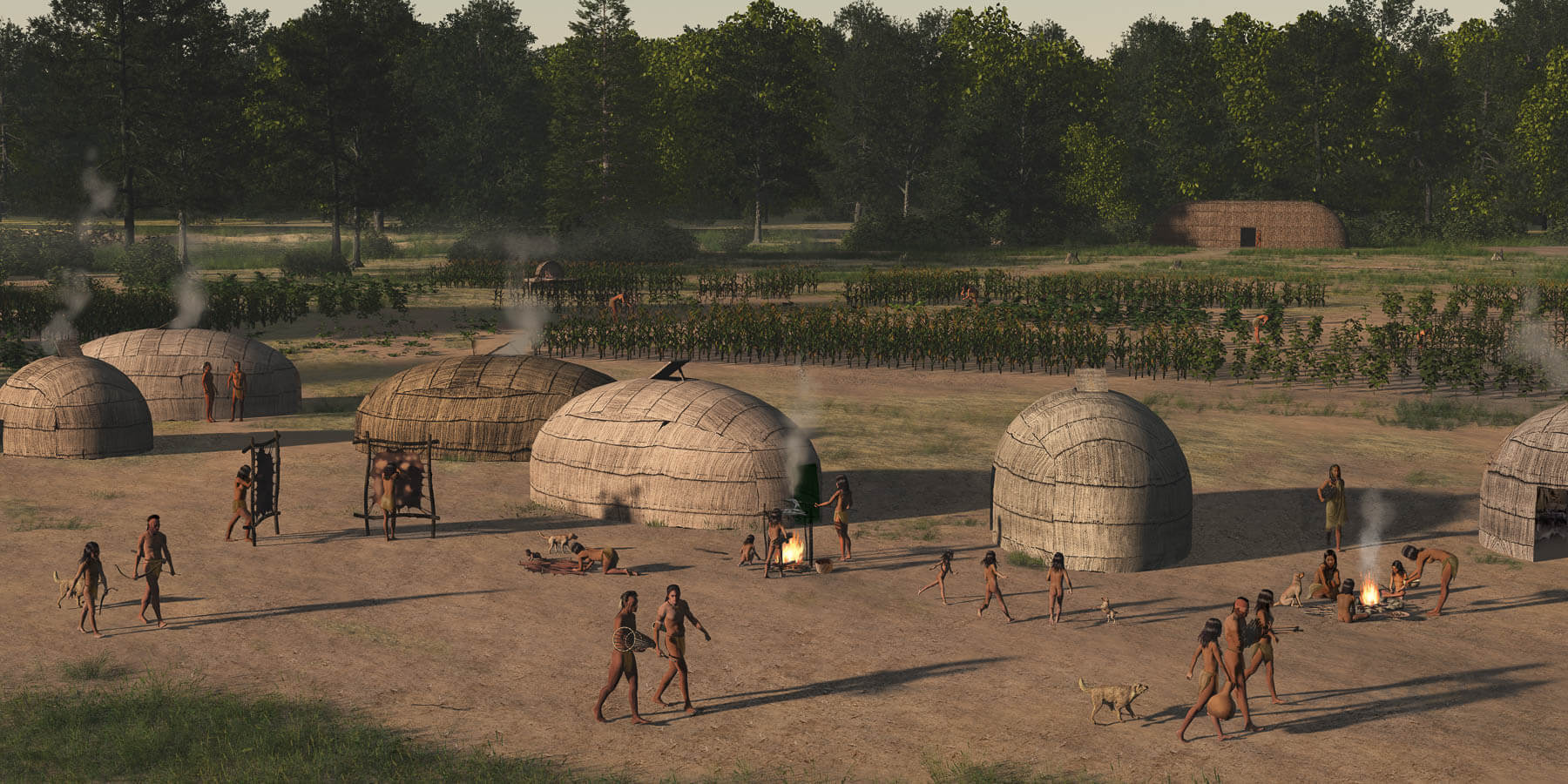Uncovering a major landmark once used by Virginia’s Indigenous tribes

We all know the story of Pocahontas and Captain John Smith, but few are familiar with the area in which that historic encounter took place, let alone how it was used by Indigenous people years before European colonists arrived.
Known as Werowocomoco, the historic site is located in Gloucester County, Virginia, on the north side of the York River—one of the largest tributaries entering into the Chesapeake Bay. The name roughly translates from the Virginia Algonquian language to mean “place of leadership,” and is thought to have been the residence of Chief Powhatan, the powerful political and spiritual leader of the Powhatan tribe.
According to some scholars, Chief Powhatan organized various tribes and communities along the southern rivers of the Chesapeake Bay into some form of a confederacy or “chiefdom.” Members may have included the ancestors of several contemporary Virginia tribes, including the Pamunkey, Mattaponi, Upper Mattaponi and likely the Nansemond and Rappahannock as well. While Captain John Smith first encountered Powhatan and his daughter Pocahontas in 1607, the chiefdom is thought to have been established years before, in the late 1500s.

Viewing Werowocomoco from afar, you can see how the site would have served Powhatan well. It’s located high up on a bluff, which would keep homes safe from flooding, and is also surrounded on all three sides by water, which is a pattern archaeologists have found in important Powhatan locations. Through a virtual tour, people can get a close up view of Werowocomoco and picture the lives of Indigenous tribes and their utilization of the land and water.
Soon after its discovery in 2001, the property was put into easement. And in 2016, the site was purchased by the National Park Service (NPS). Working with representatives from various Indigenous tribes in Virginia, NPS is developing a plan for further research, the handling of artifacts and public outreach. While you cannot currently visit Werowocomoco, many historic landmarks in the surrounding area can be accessed through the Captain John Smith Chesapeake National Historic Trail.
Suffice to say, the story of Werowocomoco and Virginia’s Indigenous tribes doesn’t end with the arrival of colonists in 1607. Today, several Native American tribes are active in Virginia, many of which share ancestry with the Virginia Algonquians who visited Werowocomoco. To learn more about the story of Indigenous people throughout the entire Chesapeake Bay watershed, visit our Indigenous peoples history page.

Comments
Nice piece! I visited Werowocomoco some years ago, before the property was wholly protected and our understanding of the site was still rudimentary. A miracle, and a testimony to the sensitivity and generosity of the owners and a joy that it is now open for learning a great deal about this seat of power for the 17th C. confederation of tribes.
Thank you!
Your comment has been received. Before it can be published, the comment will be reviewed by our team to ensure it adheres with our rules of engagement.
Back to recent stories